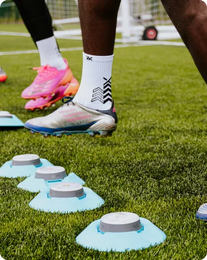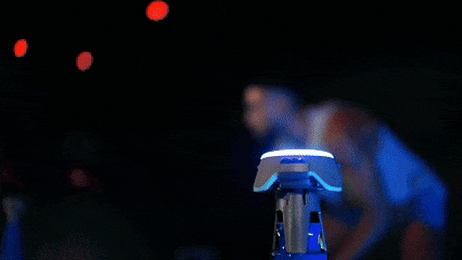Reaction time in sports is, simply, the time taken to respond to a stimulus. It can be divided into two types, simple and complex.
Types of reaction time
Let’s see what’s the difference between these two types of reaction time.
1. Simple reaction time
If the reaction is to a single stimulus, the time taken for the response is called simple reaction time. Typical reaction time for simple reactions is very quick. It generally takes 0.13 to 0.18 seconds to react to a single stimulus.
Simple reaction time examples include things like starting a sprint in response to the starting pistol. The sound of the gun is the stimulus, and starting the race is the response. The time between the gunshot sound reaching your ears and you taking the first leap of the race is the reaction time.
2. Complex reaction time
Complex reaction time is also called choice reaction time or compound reaction time. It is the time you take to respond to the correct stimulus when presented with a number of stimuli and respond in the best way possible.
Complex reaction time is generally more than the simple one. It is because the brain has to receive, interpret, perceive and process a lot of information. It has to account for all factors and process the outcomes of all the possible responses before initiating a response. This makes the reaction to such stimuli considerably slower than singular stimuli.
Complex reaction time examples in sport activities include the situations where the player has to respond to the movement of the ball, position of the other players, and the situation of the game and come up with a response that would be the best for the team.
No matter what type it is, a swift reaction time can help you excel in your game! Find out how to improve your reaction time with the Blazepod Flash Training, pushing your exercises further while simultaneously improving your reaction time.





















